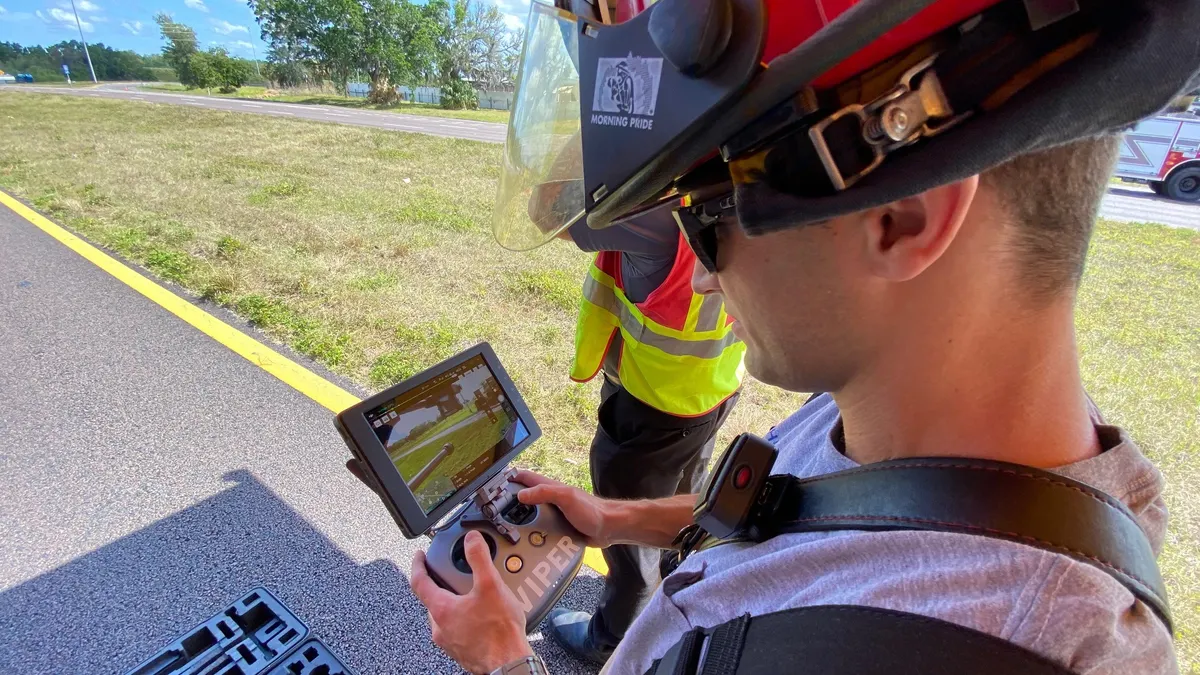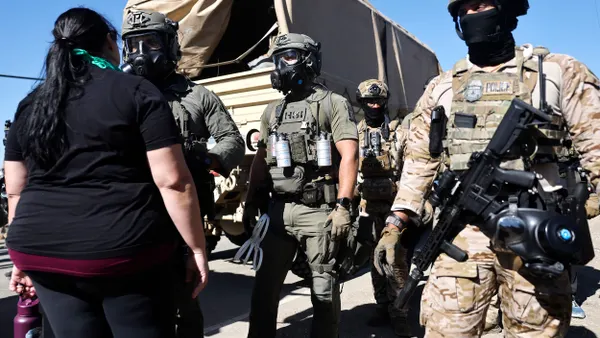Editor's note: This article was originally published in American City & County, which has merged with Smart Cities Dive to bring you expanded coverage of city innovation and local government. For the latest in smart city news, explore Smart Cities Dive or sign up for our newsletter.
Tornadoes devastated multiple states in the spring of 2024, with particularly destructive outbreaks across Texas, Oklahoma, and Mississippi in March and April, resulting in significant loss of life and property damage. NOAA research continues to highlight the unpredictable nature of severe weather, with tornado risks varying dramatically throughout the year. This ongoing threat serves as a critical reminder for organizations to maintain robust disaster preparedness plans. The 2024 hurricane season is predicted to be particularly active, with climate experts forecasting an above-average number of storms due to warming ocean temperatures and ongoing climate change impacts. With increasingly extreme weather patterns becoming the new normal, it is more important than ever for agencies, schools, and community organizations to thoroughly assess and update their emergency response strategies, communication protocols, and safety equipment.
Through partnership with a cooperative purchasing organization, procurement teams can get immediate and streamlined access to disaster preparedness and relief products and solutions at a better price. The cooperative’s industry-leading supplier solutions can help you prepare and recover from what Mother Nature has in store this year by limiting the impact to your agency or school district.
Read on to learn how a cooperative purchasing strategy can bring cost savings and immediate solutions to prep your agency, schools or university for severe weather threats.
Disaster Prep with Cooperative Purchasing
In all spend categories and procurement projects, your ability to adapt quickly is always a key component in solving the challenges that arise for your team and end users. Purchasing with an idea in mind of how your organization will respond to different scenarios eliminates any wasted time if or when that scenario comes to fruition. That preparation along with flexibility and agility you gain from a cooperative can mean the difference between chaos and calm.
Incorporating a best practice, such as cooperative purchasing, into your strategy can carry some of the burden for you not only before, but also during the natural disaster. Visibility into your supply chain is always a coveted and often difficult goal to achieve. We’ve witnessed obvious benefits of having a strong and clear supply chain during emergencies like the pandemic when cooperative suppliers pulled through to provide PPE and other hard to obtain essentials.
Have you and your team evaluated the organization’s emergency operations plan (EOP) lately? Having an EOP for what your area may experience can help your purchasing team and stakeholders respond as a hurricane approaches or during a tornado’s aftermath. Practicing the EOP shows your team how and when supplies can reach disaster impacted areas.
Tornadoes
Peak tornado season continues to evolve with changing climate patterns, but these destructive storms remain a year-round threat across the United States. The National Severe Storms Laboratory (NSSL) continues to track an average of approximately 1,200 tornadoes annually, with recent data showing increasing variability in tornado formation and intensity. In March and April of 2024, devastating tornado outbreaks struck multiple states, including particularly destructive systems that tore through Texas, Mississippi, and Oklahoma. These recent events underscore the critical importance of year-round severe weather preparedness, highlighting how tornado risks can emerge suddenly and with devastating consequences in regions both historically prone to and less accustomed to such extreme weather events.
Meteorologists remind people of safe places to seek shelter within your home or business, and the National Weather Service is about to lead #SafePlaceSelfie day on April 6th encouraging to identify the location at home and work where they’d take cover in a tornado or other severe weather event.
In an ideal world, your suppliers would be able to scale their services to the size of the disaster. OMNIA Partners supplier Fastenal provided some valuable points for procurement teams to keep in mind along with the following questions for your suppliers:
- Do you use regular business structure to support disaster efforts?
- Can you offer a glimpse into how your company could handle an emergency?
- Can you scale communications based on the size of the disaster?
- Ex. EF 3 or above tornado above may require a supplier to set up a temporary headquarters near the storm’s path. This provides a safe location to ship supplies to and from.
Vendors should be able to use delivery trucks to get supplies to disaster zones, reach out ahead of a potential situation and proactively work through requests before and after the situation. Cutting down transit time is the goal.
Hurricanes & Tropical Storms
With such a destructive Atlantic Hurricane season (June 1-November 30) last year, you have two months to make sure your school or agency is fully equipped. Your procurement team’s proactive approach and the cooperative purchasing organization's immediate access to solutions can help ensure supplies are in place if a hurricane makes landfall near your organization.
Hurricane Ida pummeled Louisiana and Mississippi at Category 4 strength last August, and OMNIA Partners supplier The Home Depot Pro activated their disaster response team to support communities in Ida’s path. More than 250 associates from the company’s merchandising, operations and supply chain teams moved truckloads of products, including generators, water, tarps, batteries and flashlights, to stores in the affected states. Ahead of disaster season, the Home Depot Foundation and its nonprofit partners strategically position emergency supplies in warehouses nationwide for quick deployment to impacted areas.
Flooding
One inch of water in your home or business could cost more than $25,000 in damage, according to FEMA, and over the past four years, hurricanes have caused above-average flooding. It may sound simple but having your cooperative partner and suppliers’ contact information where you can access it quickly and easily is something to keep in mind as flooding can block you from getting into your office. And you'd likely want to avoid wading through flood water to get into your building as the water could contain bacteria, oil, hazardous materials, solid waste and other contaminants.
To avoid spending tens of thousands of dollars on protection and recovery equipment, there’s also the option to rent the equipment instead. OMNIA Partners supplier Herc Rentals can quickly mobilize equipment near areas expected to be affected by natural disasters ensuring you have it delivered, set up, and working efficiently and safely ahead of time.
What You Can Do to Prepare
Figure out what disaster response supplies you need and tell your supplier ahead of time. Your supplier can pre-position inventory based on the projected disaster path. Do they have their own distribution network or do they rely on other vendors? If they have their own network and can proactively move inventory, you’re more likely to have the products and supplies you need right as the situation calls for it.
Don’t hesitate to discuss and ask questions about disaster response scenarios with your cooperative purchasing organization and its suppliers. The cooperative’s team of subject matter experts in various spend categories can facilitate the conversation and ensure you get the specifics needed to feel confident that your school or agency is in good hands.
Download OMNIA Partners’ Disaster Preparedness Whitepaper: The Three P’s of Disaster Preparedness
About the Author
www.omniapartners.com








